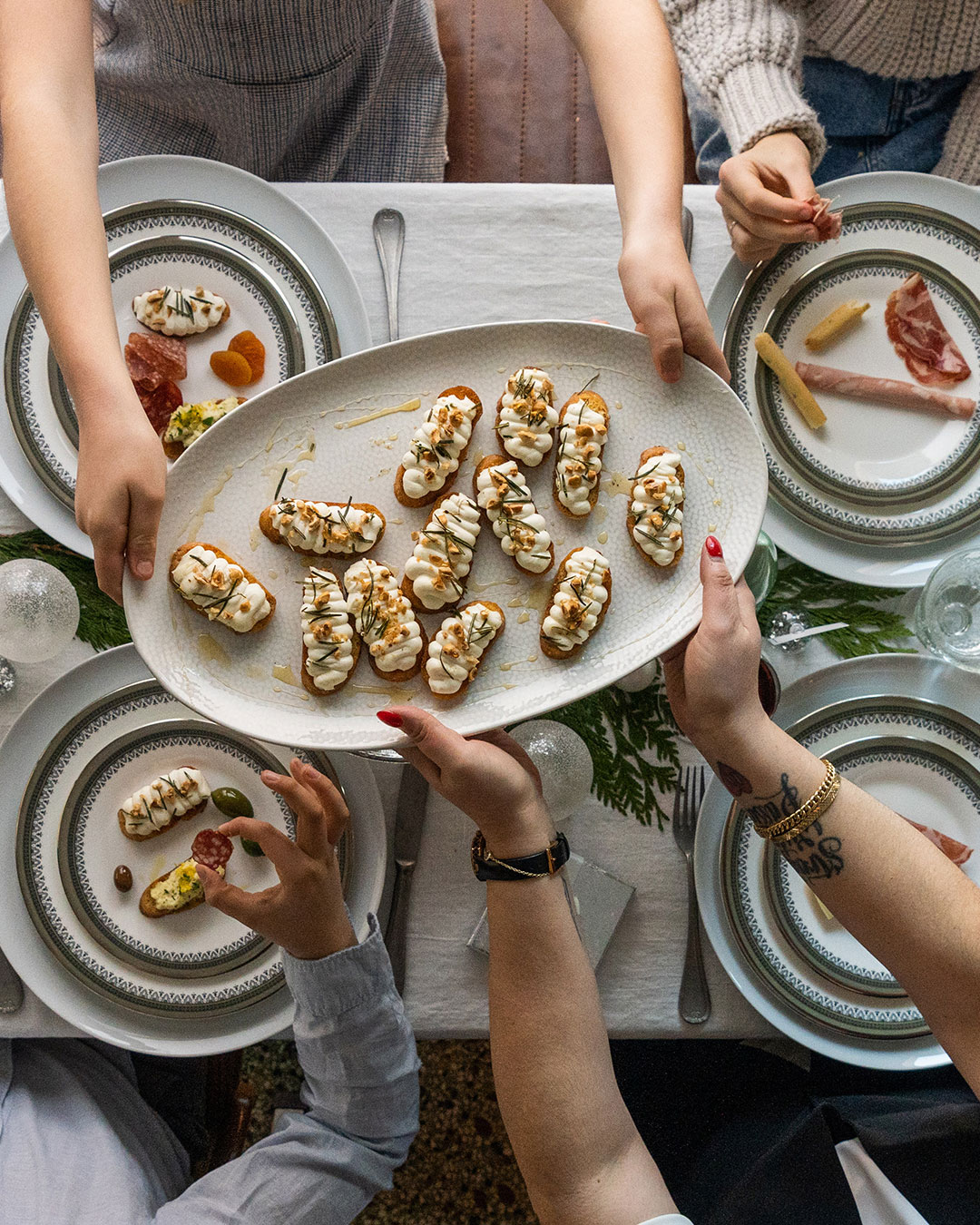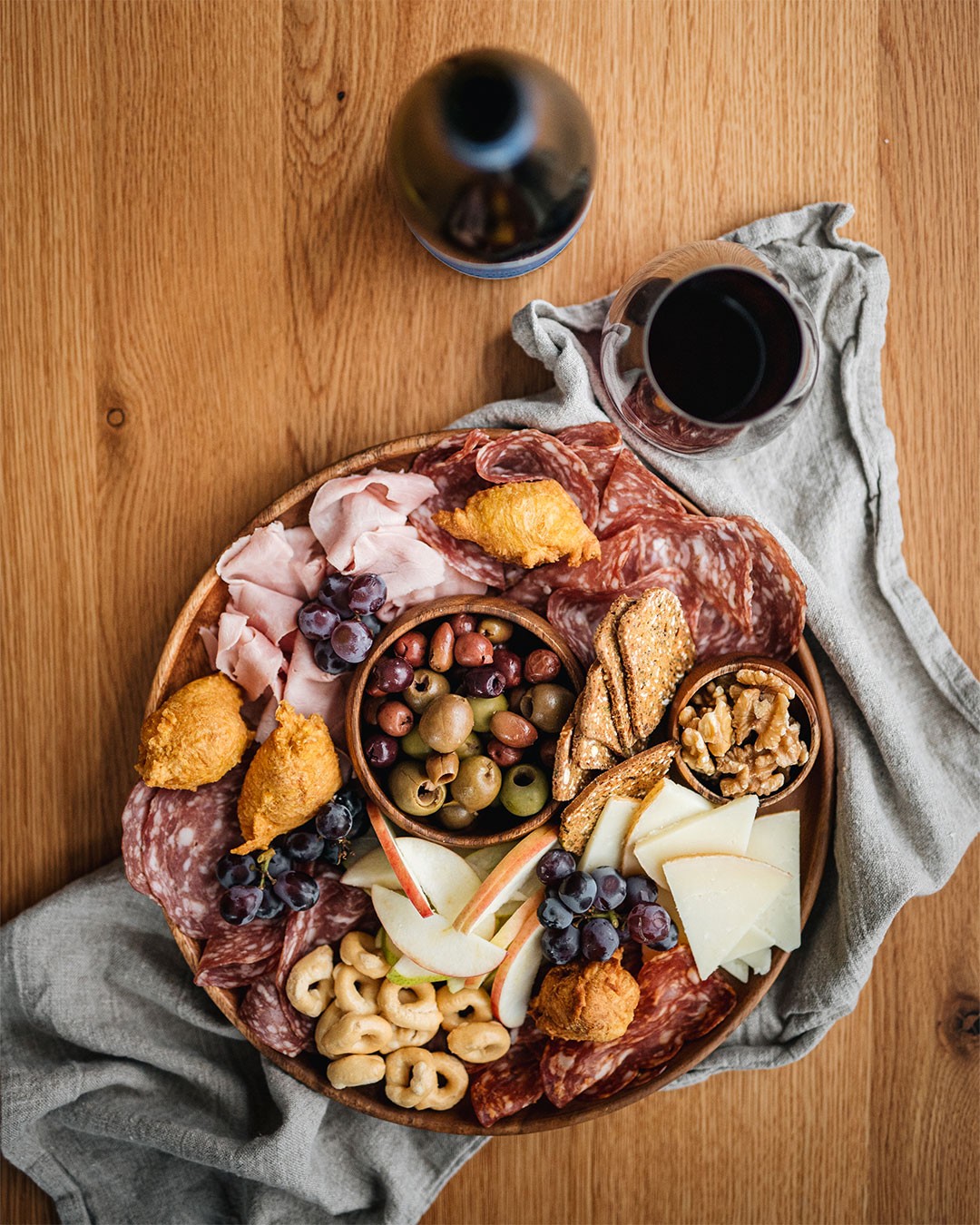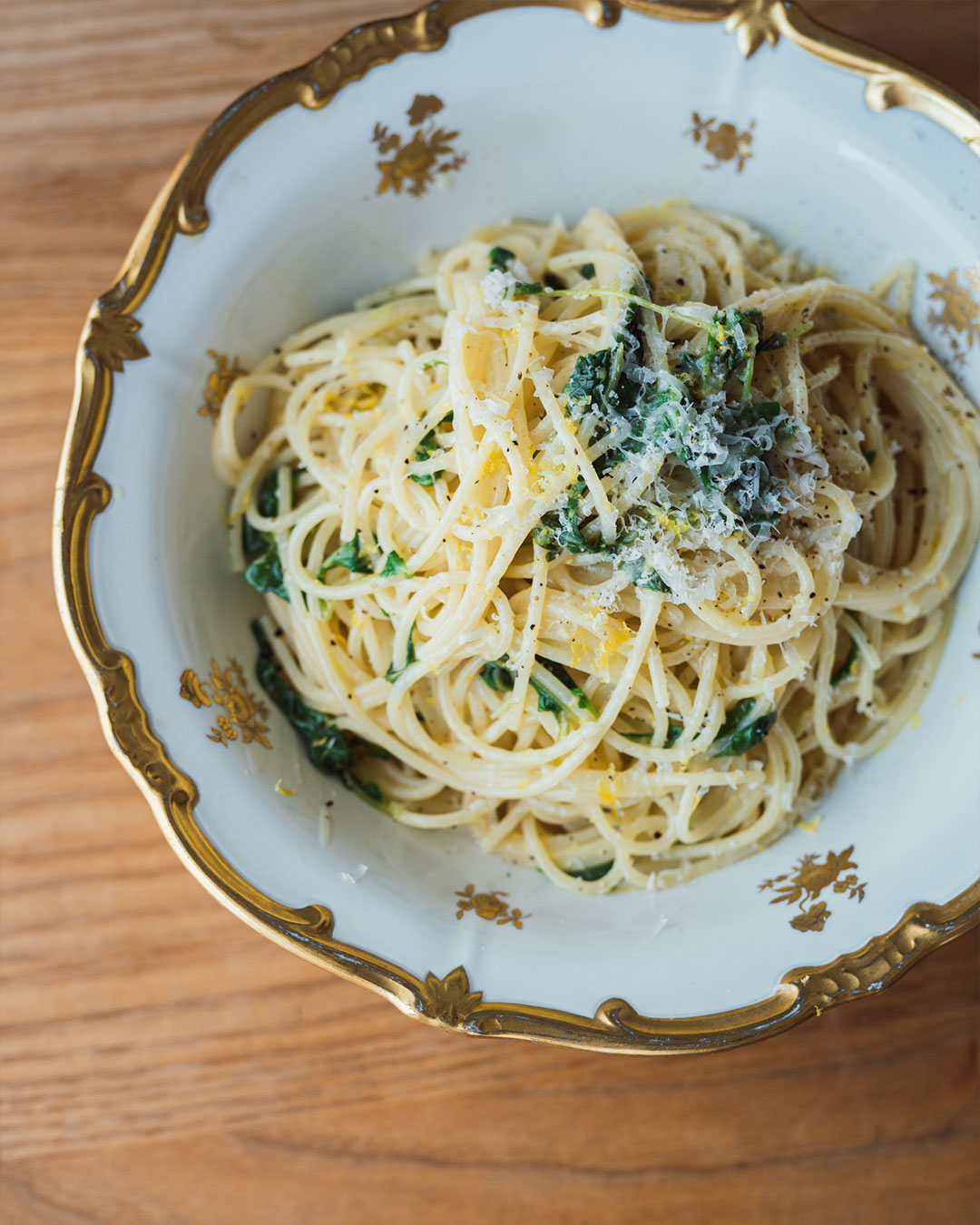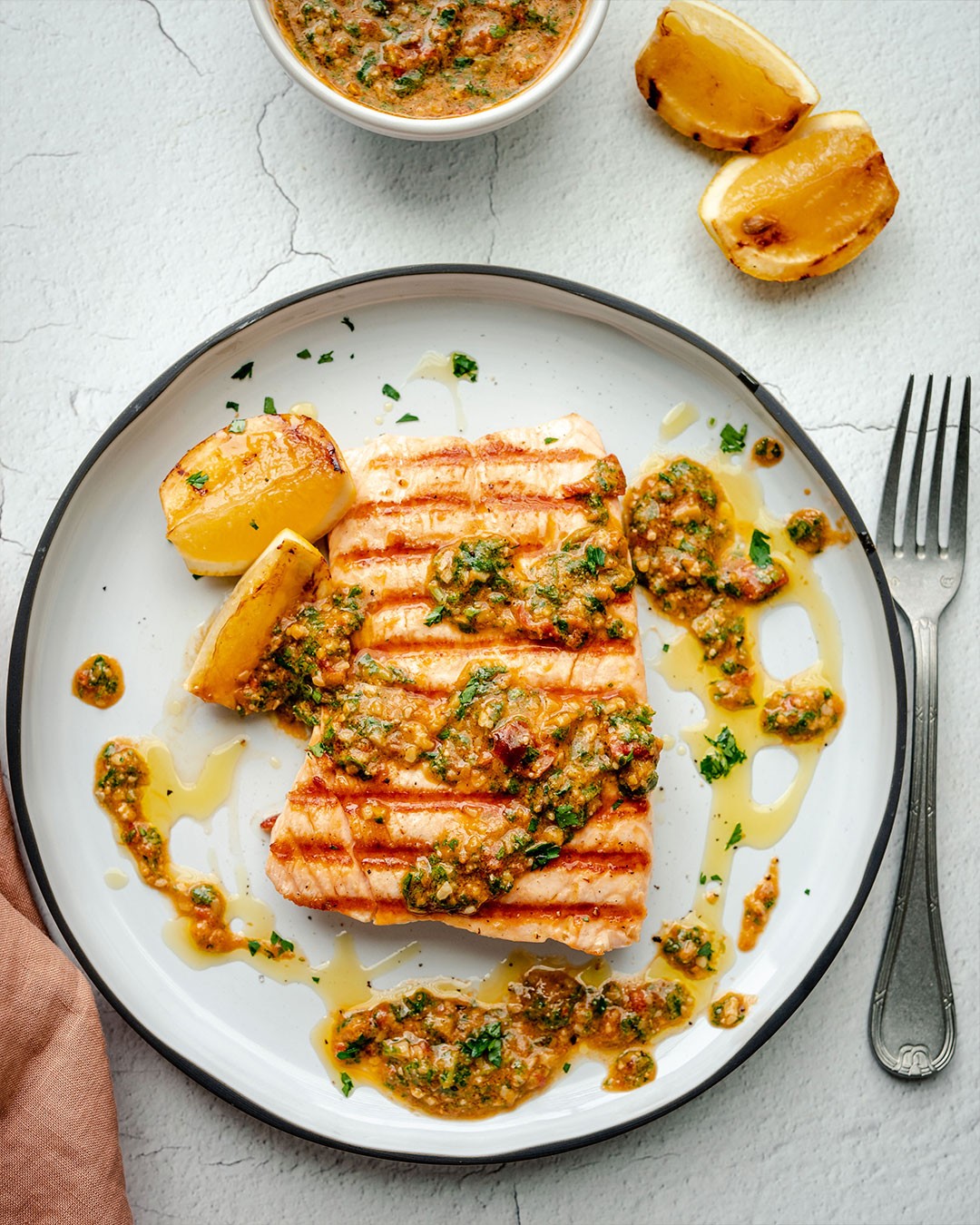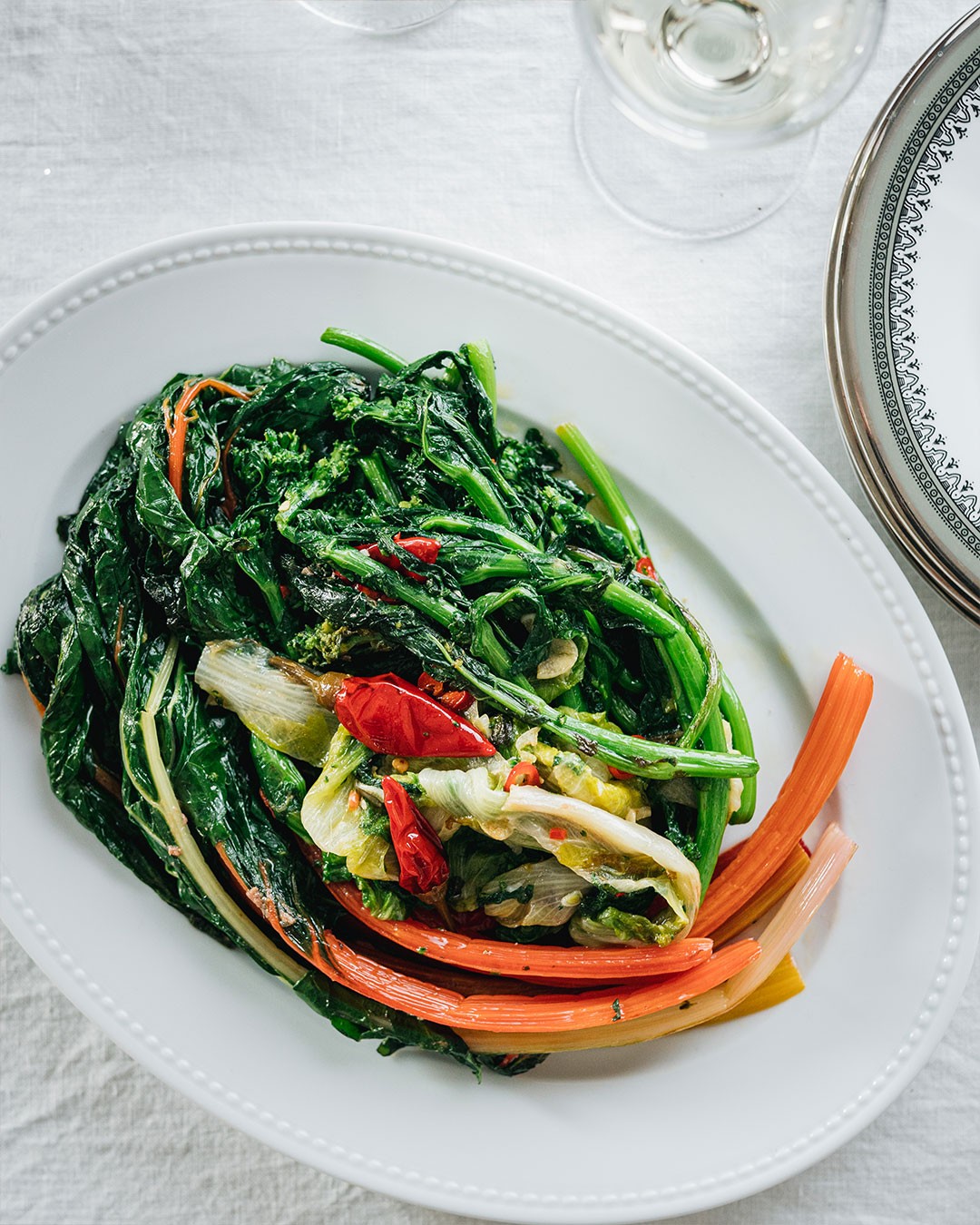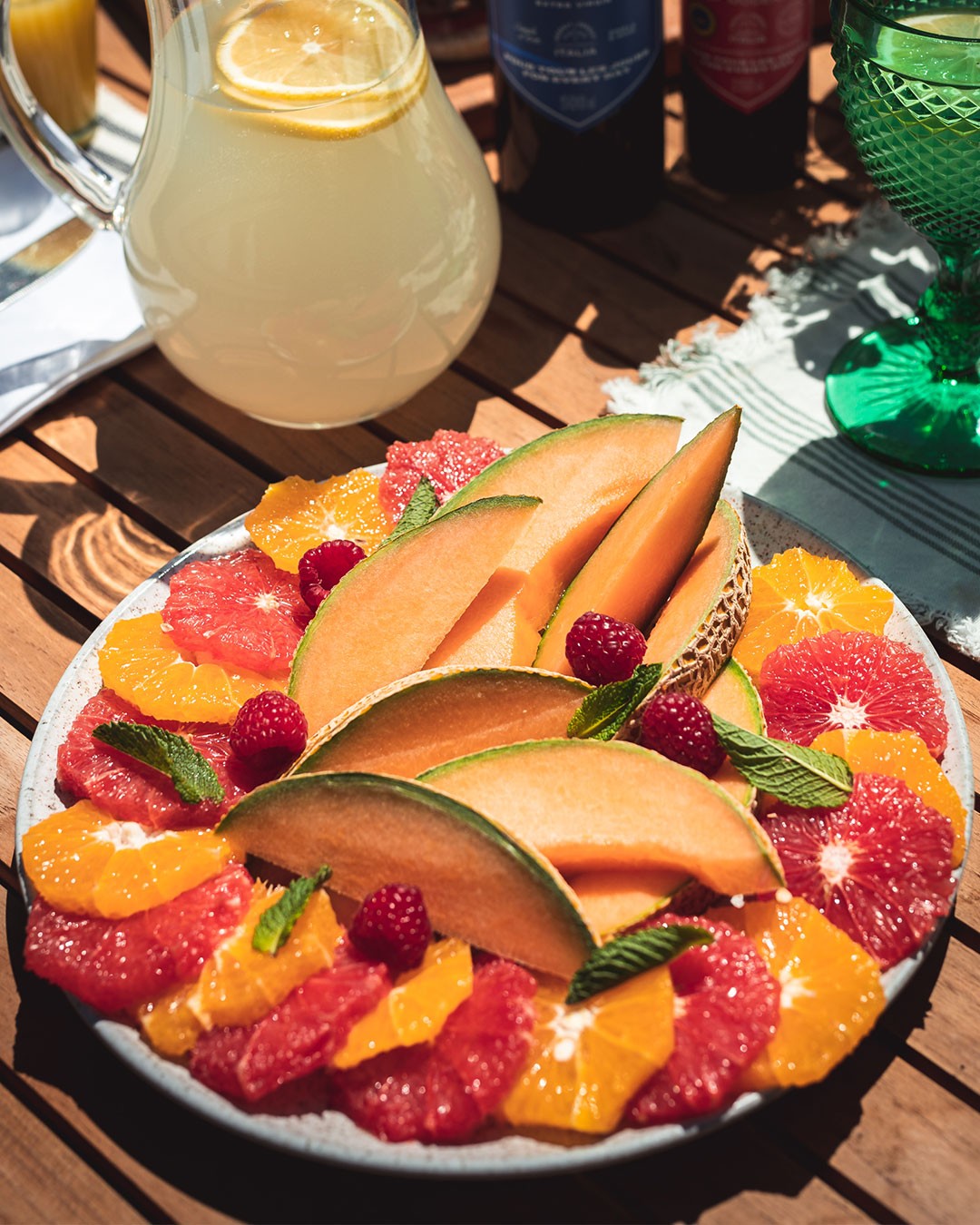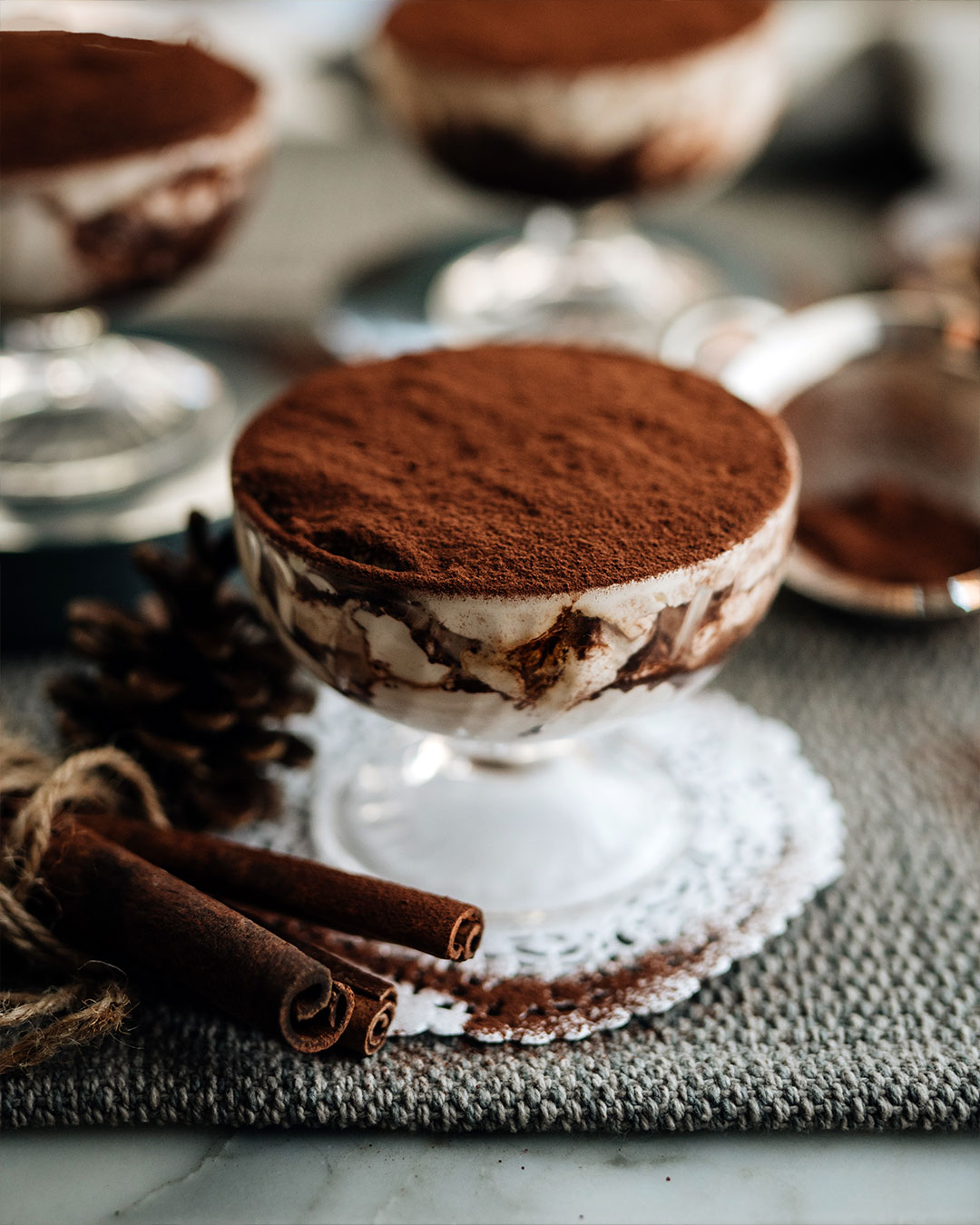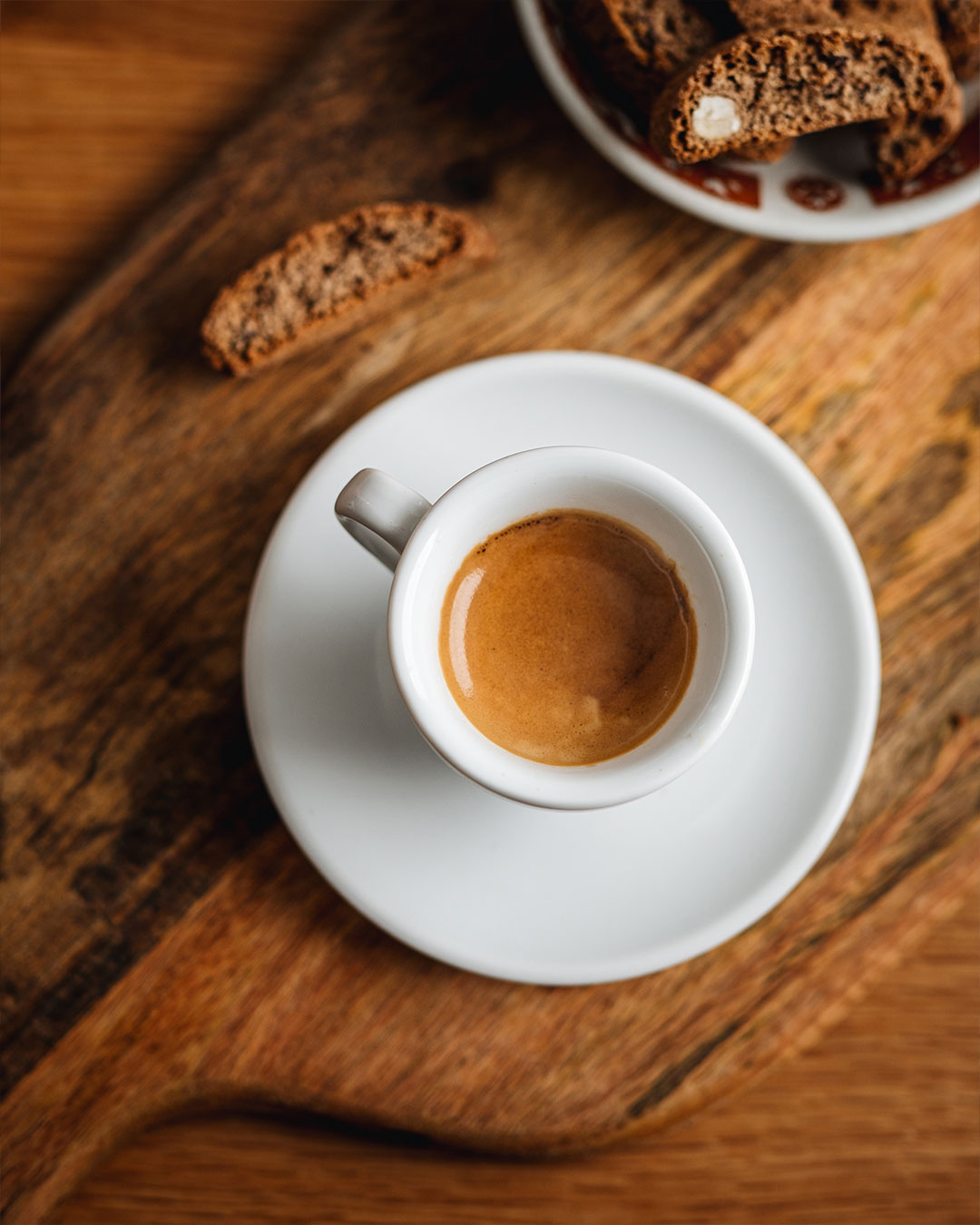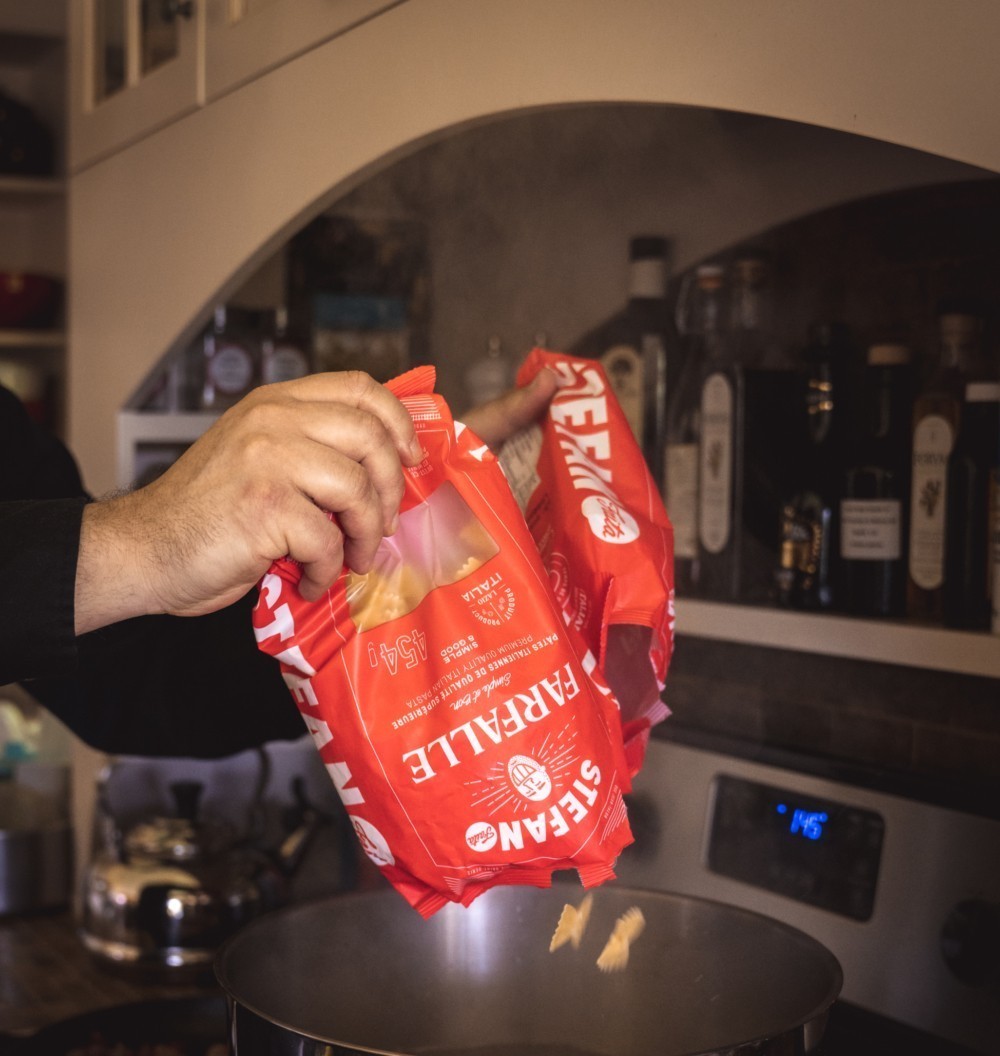The Italian Meal Structure: Making Good Things Last
If you ever get invited to an Italian home for a proper full meal (think Sunday lunch or any holiday), first make sure to clear your schedule. Then, brush up on the traditional service structure to ensure you pace yourself and leave room for all that good stuff!
In Italy, full meals are usually an all-day affair—a slow-paced intergenerational gathering where every dish and every conversation is savoured fully. We could all use a little more delicious quality time, right? So, whether you have an in with a nonna or just want to do like the Italians do, here’s a rundown of a typical multi-course Italian feast—plus tried-and-true recipes to get your creative juices flowing. Follow the guide!
Antipasto
Watch out; we’re getting off to a strong start! Antipasto can look very different from one Italian region to another, but usually, one can count on the presence of beautiful cured meats and cheeses. And although guests are often tempted to eat a lot of it, moderation is key. Italians stick to small portions because they know the best is yet to come!
Have you tried our charcuterie platter with sgonfiotti or burrata and tomato crostone?
Primo
Primo piatto, literally “first plate,” is the first formal plated course of any full-blown Italian meal. This is usually where cooks let their favourite carbs shine—hello pasta, polenta, and risotto! All courses are essential, but let’s be honest, the primo holds a special place in pretty much everyone’s heart. It often features lighter, vegetarian specialties, and it builds up appetite for the more robust—you’ve guessed it—secondo piatto.
Picking a favourite dish for this course would be like picking a favourite child, but here are a few primo stars: casarecce alla norma, butternut squash risotto, and spaghetti al limone.
Secondo
Everyone’s warmed up and settled in—it’s time for protein. Secondo is kind of the Italian equivalent of a main dish, and it generally consists of meat, fish, or seafood. It should be noted that the ingredients are usually prepared simply to show off their quality. Once again, Italians try to stick to reasonable portions for this course to ensure no one crashes just yet.
Here are a few outstanding recipes for secondo: chicken piccata, grilled salmon with Sicilian pesto, and tagliata steak.
Contorno
OK, but what about vegetables? In Italian, contorno means “on the side,” but it’s a little different than the typical North American side dish. It should harmonize with the secondo rather than compete with it, and it should offer a nice touch of freshness and lightness to help balance the heaviest course. You might have noticed that most Italians eat salad at the end of the meal rather than as an appetizer. Now you know why!
Fun contorno ideas for you: shaved vegetable salad or sautéed greens.
Frutta
Yes, a whole course dedicated to fruit! Before attacking dessert, Italians enjoy a few bites of whatever fruits are in season. The colourful delights are usually spread out on a nice platter. It’s a delicious step but also a welcome respite after the first four courses. And yes, it’s much easier to find seasonal fruits all year long in the Mediterranean than in our climate. However, we can still make an effort to choose quality local products when possible, or at least fruits that are properly in season somewhere in the world.
In winter, think of citrus and kaki. In the spring, highlight local strawberries and even rhubarb. In summer, go for stone fruits, berries, and melons. In the fall, think of apples, pears, and grapes, for example.
Dolce
Dolce means sweet, and that means it’s time for dessert. Italy has no shortage of sweet treat options, and each region has its specialties, which are then adapted to city, village, or family preferences. It’s a whole thing. Considering the amount of work that already went into the meal, most Italian families will have prepared a simple(ish) dessert ahead of time to ease the process. After all, even the cooks deserve some downtime!
There’s a world of Italian desserts out there, but these are two of our all-time (simple, do-ahead) favourites: panna cotta with berries and tiramisù.
Caffè
By this point, chances are everyone will be a little sleepy. To remedy the dip in energy, Italians will serve coffee, more precisely, espresso. Coffee is an important part of the ritual, and it is brewed at all hours of the day. We suggest you follow Italy’s code and skip the milk after eating to aid digestion.
Looking for real Italian coffee? We’ve got you covered with our espresso.
Digestivo
Don’t worry, we’re almost done! Digestivo is like a small alcoholic cherry on top of your meal odyssey. No need to go wild, just a small final sip in a shot or short glass will do. Most Italian families prefer something sweet or bitter, like limoncello, amaro, or grappa. And many even make their own, but that’s a whole other set of traditional skills.
Congrats, you’ve made it to the end of a full Italian meal! Now, all that’s left to do is help clean up, thank your host warmly, and maybe go on a little walk to clear your head and belly. Oh! And start planning the meal you’ll make them to return the favour.

